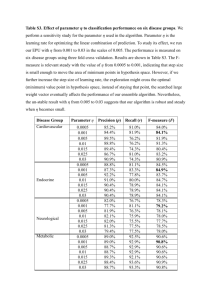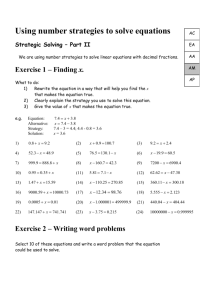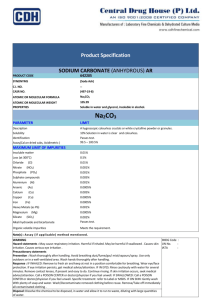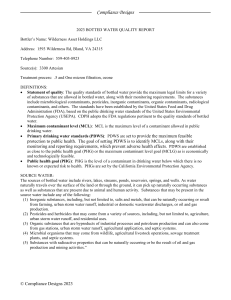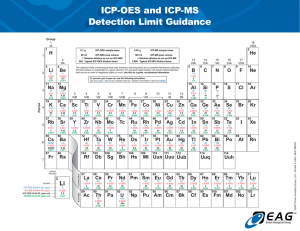More Examples Using Approximations
advertisement
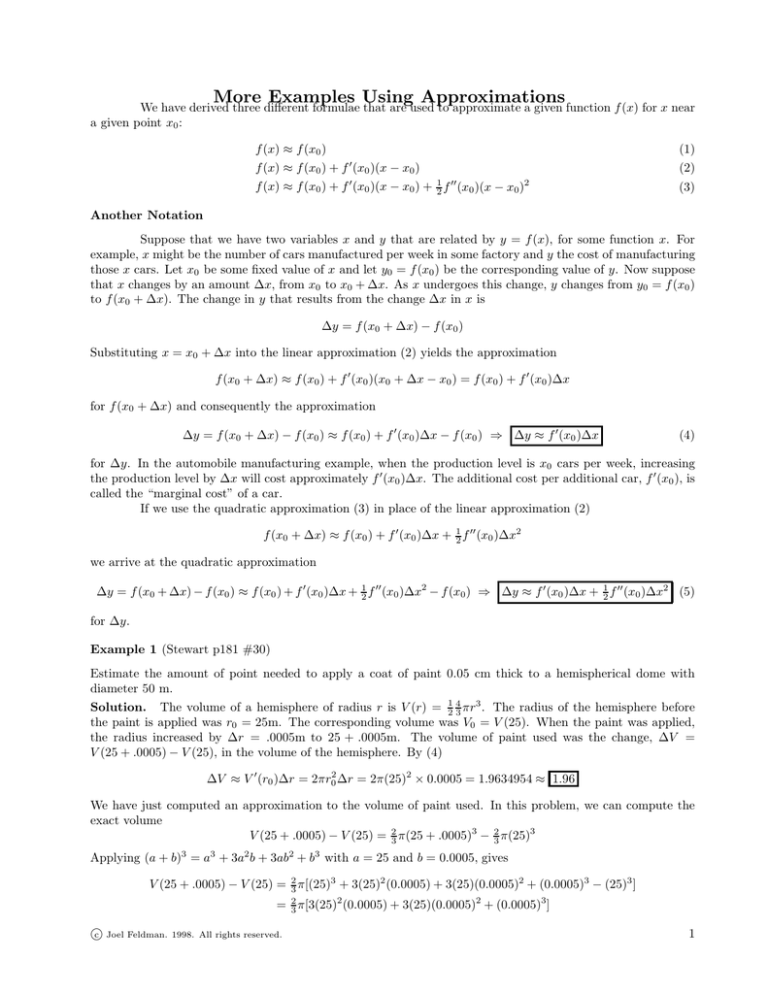
More Examples Using Approximations We have derived three different formulae that are used to approximate a given function f (x) for x near a given point x0 : f (x) ≈ f (x0 ) f (x) ≈ f (x0 ) + f ′ (x0 )(x − x0 ) (1) (2) f (x) ≈ f (x0 ) + f ′ (x0 )(x − x0 ) + 21 f ′′ (x0 )(x − x0 )2 (3) Another Notation Suppose that we have two variables x and y that are related by y = f (x), for some function x. For example, x might be the number of cars manufactured per week in some factory and y the cost of manufacturing those x cars. Let x0 be some fixed value of x and let y0 = f (x0 ) be the corresponding value of y. Now suppose that x changes by an amount ∆x, from x0 to x0 + ∆x. As x undergoes this change, y changes from y0 = f (x0 ) to f (x0 + ∆x). The change in y that results from the change ∆x in x is ∆y = f (x0 + ∆x) − f (x0 ) Substituting x = x0 + ∆x into the linear approximation (2) yields the approximation f (x0 + ∆x) ≈ f (x0 ) + f ′ (x0 )(x0 + ∆x − x0 ) = f (x0 ) + f ′ (x0 )∆x for f (x0 + ∆x) and consequently the approximation ∆y = f (x0 + ∆x) − f (x0 ) ≈ f (x0 ) + f ′ (x0 )∆x − f (x0 ) ⇒ ∆y ≈ f ′ (x0 )∆x (4) for ∆y. In the automobile manufacturing example, when the production level is x0 cars per week, increasing the production level by ∆x will cost approximately f ′ (x0 )∆x. The additional cost per additional car, f ′ (x0 ), is called the “marginal cost” of a car. If we use the quadratic approximation (3) in place of the linear approximation (2) f (x0 + ∆x) ≈ f (x0 ) + f ′ (x0 )∆x + 12 f ′′ (x0 )∆x2 we arrive at the quadratic approximation ∆y = f (x0 + ∆x) − f (x0 ) ≈ f (x0 ) + f ′ (x0 )∆x + 21 f ′′ (x0 )∆x2 − f (x0 ) ⇒ ∆y ≈ f ′ (x0 )∆x + 21 f ′′ (x0 )∆x2 (5) for ∆y. Example 1 (Stewart p181 #30) Estimate the amount of point needed to apply a coat of paint 0.05 cm thick to a hemispherical dome with diameter 50 m. Solution. The volume of a hemisphere of radius r is V (r) = 21 43 πr3 . The radius of the hemisphere before the paint is applied was r0 = 25m. The corresponding volume was V0 = V (25). When the paint was applied, the radius increased by ∆r = .0005m to 25 + .0005m. The volume of paint used was the change, ∆V = V (25 + .0005) − V (25), in the volume of the hemisphere. By (4) ∆V ≈ V ′ (r0 )∆r = 2πr02 ∆r = 2π(25)2 × 0.0005 = 1.9634954 ≈ 1.96 We have just computed an approximation to the volume of paint used. In this problem, we can compute the exact volume V (25 + .0005) − V (25) = 23 π(25 + .0005)3 − 32 π(25)3 Applying (a + b)3 = a3 + 3a2 b + 3ab2 + b3 with a = 25 and b = 0.0005, gives V (25 + .0005) − V (25) = 32 π[(25)3 + 3(25)2 (0.0005) + 3(25)(0.0005)2 + (0.0005)3 − (25)3 ] = 32 π[3(25)2 (0.0005) + 3(25)(0.0005)2 + (0.0005)3] c Joel Feldman. 1998. All rights reserved. 1 The linear approximation, ∆V ≈ 2π(25)2 × 0.0005, is recovered by retaining only the first of the three terms in the square brackets. Thus the error introduced by the linear approximation is obtained by retaining only the last two terms in the square brackets. This error is 2 2 3 π[3(25)(0.0005) + (0.0005)3] = 0.0000393 Example 2 If an aircraft crosses the Atlantic ocean at a speed of u mph, the flight costs the company C(u) = 100 + u 3 + 240,000 u dollars per passenger. When there is no wind, the aircraft flies at an airspeed of 550mph. Find the approximate savings, per passenger, when there is a 35 mph tail wind. Estimate the cost when there is a 50 mph head wind. Solution. Let u0 = 550. When the aircraft flies at speed u0 , the cost per passenger is C(u0 ). By (4), a change of ∆u in the airspeed results in an change of ∆C ≈ C ′ (u0 )∆u = 1 3 − 240,000 u20 ∆u = 31 − 240,000 5502 ∆u ≈ −.460∆u in the cost per passenger. With the tail wind ∆u = 35 and the resulting ∆C ≈ −.460 × 35 = −16.10, so there is a savings of $16.10 . With the head wind ∆u = −50 and the resulting ∆C ≈ −.4601 × (−50) = 23.01, so there is an additional cost of $23.00 . Example 3 To compute the height h of a lamp post, the length a of the shadow of a six–foot pole is measured. The pole is 20 ft from the lamp post. If the length of the shadow was measured to be 15 ft, with an error of at most one inch, find the height of the lamp post and estimate the relative error in the height. h 6 a 20 Solution. By similar triangles, 20 + a 6 120 a = ⇒ h = (20 + a) = +6 6 h a a The length of the shadow was measured to be a0 = 15 ft. The corresponding height of the lamp post is 120 h0 = 120 a0 + 6 = 15 + 6 = 14 ft . If the error in the measurement of the length of the shadow was ∆a, then the exact shadow length was a = a0 + ∆a and the exact lamp post height is h = f (a0 + ∆a), where f (a) = 120 a + 6. The error in the computed lamp post height is ∆h = h − h0 = f (a0 + ∆a) − f (a0 ). By (4) 120 ∆a = − 15 ∆h ≈ f ′ (a0 )∆a = − 120 2 ∆a a2 0 We are told that |∆a| ≤ 1 12 . Consequently |∆h| ≤ |∆h| h0 c Joel Feldman. 1998. All rights reserved. ≤ 120 1 152 12 10 225×14 = 10 225 (approximately). The relative error is then ≈ 0.003 or 0.3% 2
